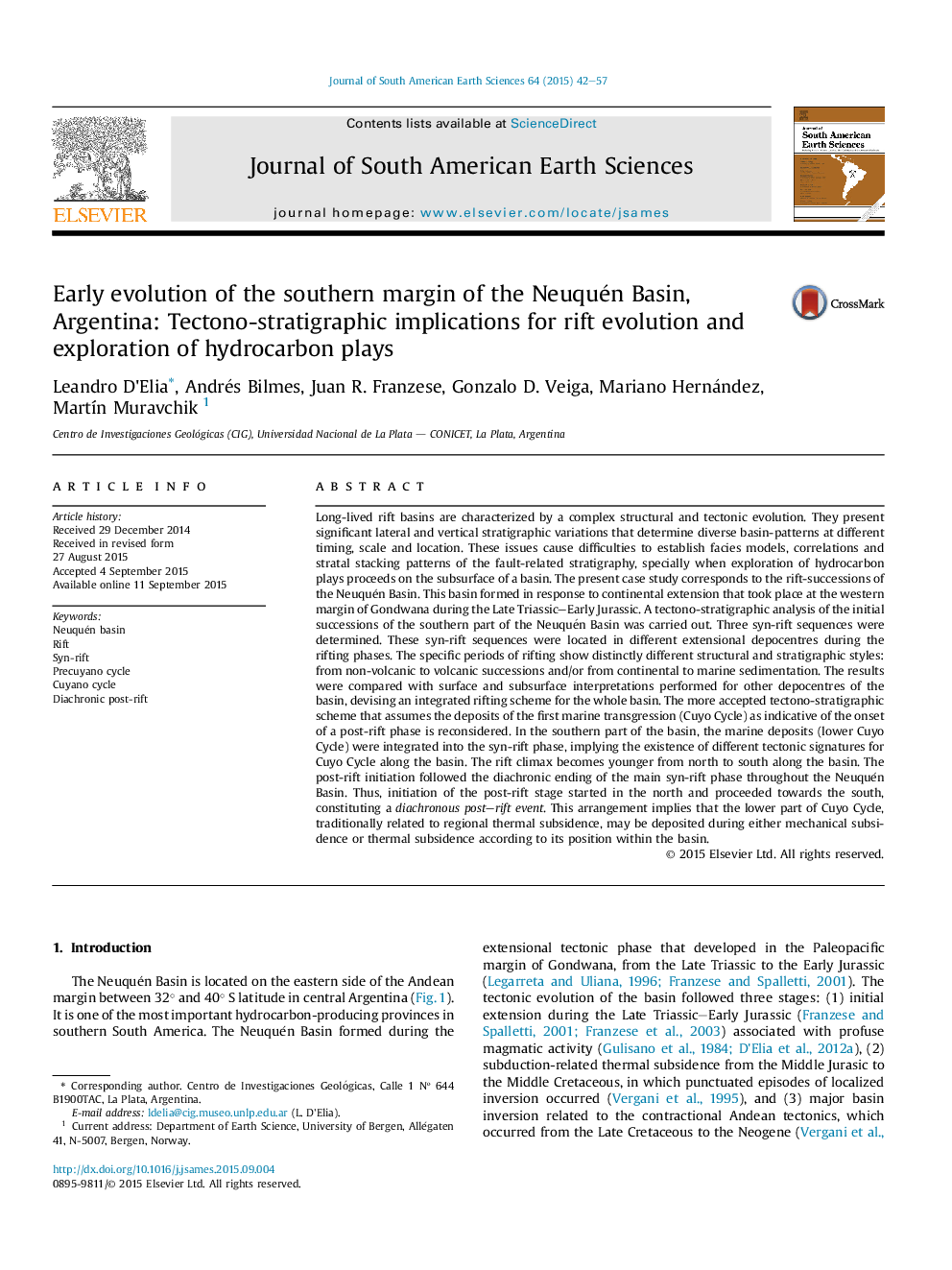| کد مقاله | کد نشریه | سال انتشار | مقاله انگلیسی | نسخه تمام متن |
|---|---|---|---|---|
| 4682109 | 1348894 | 2015 | 16 صفحه PDF | دانلود رایگان |

• The tectono-stratigraphic analysis determined three different syn-rift sequences.
• The syn-rift sequences involve changes: in the sedimentation, presence or absence of the volcanism and reorganization of the depocentres.
• The results indicate that the end of syn-rift climax controlled the diachronous onset of the post-rift.
• Cuyo deposits may have occurred driving either mechanical subsidence or thermal subsidence according to the basin position.
Long-lived rift basins are characterized by a complex structural and tectonic evolution. They present significant lateral and vertical stratigraphic variations that determine diverse basin-patterns at different timing, scale and location. These issues cause difficulties to establish facies models, correlations and stratal stacking patterns of the fault-related stratigraphy, specially when exploration of hydrocarbon plays proceeds on the subsurface of a basin. The present case study corresponds to the rift-successions of the Neuquén Basin. This basin formed in response to continental extension that took place at the western margin of Gondwana during the Late Triassic–Early Jurassic. A tectono-stratigraphic analysis of the initial successions of the southern part of the Neuquén Basin was carried out. Three syn-rift sequences were determined. These syn-rift sequences were located in different extensional depocentres during the rifting phases. The specific periods of rifting show distinctly different structural and stratigraphic styles: from non-volcanic to volcanic successions and/or from continental to marine sedimentation. The results were compared with surface and subsurface interpretations performed for other depocentres of the basin, devising an integrated rifting scheme for the whole basin. The more accepted tectono-stratigraphic scheme that assumes the deposits of the first marine transgression (Cuyo Cycle) as indicative of the onset of a post-rift phase is reconsidered. In the southern part of the basin, the marine deposits (lower Cuyo Cycle) were integrated into the syn-rift phase, implying the existence of different tectonic signatures for Cuyo Cycle along the basin. The rift climax becomes younger from north to south along the basin. The post-rift initiation followed the diachronic ending of the main syn-rift phase throughout the Neuquén Basin. Thus, initiation of the post-rift stage started in the north and proceeded towards the south, constituting a diachronous post–rift event. This arrangement implies that the lower part of Cuyo Cycle, traditionally related to regional thermal subsidence, may be deposited during either mechanical subsidence or thermal subsidence according to its position within the basin.
Figure optionsDownload as PowerPoint slide
Journal: Journal of South American Earth Sciences - Volume 64, Part 1, December 2015, Pages 42–57